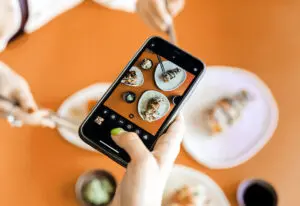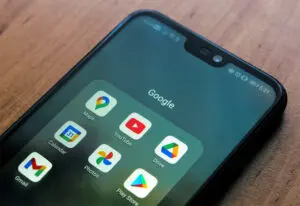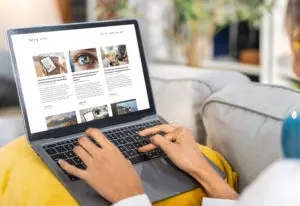
What Your Brand Is Made Of: Product Packaging Design That Gets Noticed
Your brand is made of hard work, late nights, and a fair amount of tears. Every product that goes out your door or is added to a virtual cart results from those things. And the product packaging design you choose will either give a great first impression or have your audience walking (or scrolling) away. Savy helps brands design and market packaging that gets noticed.
Product packaging design and your brand
First off, what do we mean when we talk about product packaging design? It’s simply the exterior of your product—the material, form, graphics, and colors. The sum of these packaging decisions have a direct impact on your brand. You know the adage ‘don’t judge a book by its cover’? Yeah, unfortunately, your audience will judge your product based on its packaging design (no pressure).
If you’re smack-dab in the middle of product design, deciding on packaging might seem like yet another hurdle between you and your brand goals. Not to mention that you have the added consideration of the outer packaging (the first thing your customer’s see), the inner packaging (that “unboxing moment”), and the product packaging (the designs that bring it all together; the vessel for your product).
Fortunately, with the right guidance from an experienced marketing agency, you can create packaging design that connects and converts.
Why does good packaging design matter?
Good packaging reflects on your brand. If your product packaging design is the first introduction someone has to your brand, what kind of introduction does it make? Is it loud and colorful? Or does it give a subtle wink? Good packaging design understands the end-user. It knows how to nonverbally communicate with them in a way that fosters trust, curiosity, or excitement.
The following five trends may be the latest design trends, but they’re also integrations that will keep your brand relevant for years to come.
Trend 1: Telling your product’s story
It’s true that brand storytelling is not new. But something that we’re seeing more of is storytelling that extends to every touchpoint, even the packaging. This storytelling happens when you’ve taken the time to establish your brand’s voice, identity, and presence in the world.
Is your brand a comforting friend users turn to when they need to solve a specific problem? Or does it give them a 3000-volt charge to motivate them when they need it most?
Depending on what type of product(s) you have, telling your story might look a little different. It could be that you have a snarky, relatable brand tone that carries over onto the packaging. Or that your package reflects the visual language you’ve built throughout your website and social media. Maybe it’s even a really funky bottle or wrapper that pulls the user in.
Function of Beauty is a great example of committing to their highly customized messaging from website to product bottles, even going so far as to personalize with the customer’s name.
Trend 2: Old school, revived
T-swift called it out: “come back stronger than a ’90s trend.” Old school designs, fonts, fabrics, cuts, and cult favorites are coming back stronger than ever—primarily from the ’70s, ’80s, and ’90s. It’s no wonder that this old-school revival has made its way to product packaging design as well.
This nostalgic packaging offers a feel-good throwback for users (we could all use a little more of the “simpler times”), but utilizes modern, more sustainable materials and sourcing.
In other words, users love the old school look with new school benefits. A good example of this is the brand, Sound, whose drink cans look straight outta the ‘80s but flavors are from 3021. Not to mention that they also focus on modern commitments like organic flavoring, no added sugar, and donate to causes that provide food access.
Trend 3: Personality and personalization
We may live in a digital world, but seeing something hand-drawn or written still sparks joy. Designs with a human touch are coming together in a big way. Think: a handwritten signature on a packaging insert or a hand drawn logo.
These hand-crafted elements “add a human touch that will connect more with consumers.” Balance this human element with the personalization factor that brands can leverage with AI, and you can connect with your audience on more than one level.
We see this most commonly with smaller, more artisanal brands (like this coffee shop), but bigger brands are hopping on the trend as well (like this soap brand).
Trend 4: Sustainability is key
Remember when we talked about how sustainable packaging design is vitally important for brands? Well, this trend is here to stay and should be applied throughout all aspects of your brand and packaging design choices.
Stats show us that 70 percent of purpose-driven shoppers are looking for recycled or eco-friendly goods and are willing to change their purchasing habits to brands that do this. This translates into investing in biodegradable and recyclable product materials, sustainable packaging (see our client examples below!), and ethical sourcing and shipping for your brand.
In a world where influencers will unbox your package live on social media, the type of packaging and product materials you choose can make or break your brand.
Trend 5: Streamlined design
Lastly, when it comes to product packaging design that gets noticed, you need streamlined design. This simplicity should translate from your website and social media to your packaging and the products themselves. Not only does streamlined design often add more value for the money, but it also increases the user experience.
The trick here is to think like a minimalist. Focus on sleek designs, simple materials, and minimal (but impactful) content. You want your design to reflect your brand, not cover it up and confuse your audience. It doesn’t hurt to have it look good on the ‘Gram, either. Beauty brands are leading the pack on this trend with brands like Fussy, Hims, and Hers creating simplistic, yet eye-catching packaging designs.
Client examples we love
Our team of designers, developers, writers, and strategists brings your product, branding goals, and marketing needs to life. Wherever you are in the brand development process, we approach your needs with comprehensive services that range from brand and packaging design to web development and ongoing digital marketing.
Here are a few of our favorite client examples that we’ve provided product packaging design and ongoing marketing support for:
Little Red Wagon Granola
Little Red Wagon Granola is a family-owned artisan granola company based on the East Coast. The brand came to Savy for a suite of things, including product packaging and design. Our design team created youthful, vibrant packaging that was sustainably sourced and used non-toxic and recyclable materials. Overall, the new site, packaging, and social branding help to showcase the company’s growth, commitment to sustainability and balance, and unique granola flavors.
CannaVida
CannaVida is a vertically integrated cannabis company located in Central Oregon. They came to Savy before opening their showroom for their new website and product packaging design. The result was a website and product packaging that reflected the brand’s high-tech, sleek appearance.
Northerly
Northerly is a Canada-based farm that pursues technologically advanced modern agriculture. They came to Savy for ground-up marketing, including brand naming and positioning, logo and web design, collateral and packaging, and ongoing marketing. Our teams focused on clean designs, brand storytelling, and bio-based and fully compostable packaging, supporting their eco-friendly position.
Savy’s team brings your product packaging design to life
Savy helps bring brands to life from the light bulb idea to the go-to-market moment. Whether you’re in the midst of brand development, a redesign, or want to bring your incredible packaging to the right audiences, we’re here to make magic happen. Let’s get to it.
Recent Posts
Custom Website Design and Development vs. Off-the-Shelf: What’s Right for Your Business?
Having a website that represents your brand and serves your business effectively can make or break your success in 2025. This poses the important question: Should you opt for custom […]
Read MoreHow to Rebrand Your Instagram for Better Engagement and Brand Recognition
Your Instagram presence can act as a beacon for brand recognition and customer engagement. It’s about painting a picture so compelling that your audience cannot help but be drawn to […]
Read MoreFrom Clicks to Conversions: The Science of High-Performing Digital Ads
The journey from interest to purchase is often paved with digital advertisements. However, not all digital ads are crafted equally. While some fade into the background, others command attention and […]
Read MoreBrand Consistency Examples That Will Make You Rethink Your Marketing Strategy
A consistent and strategic brand identity across all platforms is not just beneficial; it’s essential. By exploring real-world brand consistency examples, we uncover the immense power of maintaining a coherent […]
Read More3 Ways to Transform Blogs With SEO and Make Google Love Your Content
As marketers and business owners, our goal is to ensure the blogs we publish confidently stride into the spotlight of Google’s top search results. Achieving this requires great content, but […]
Read More



